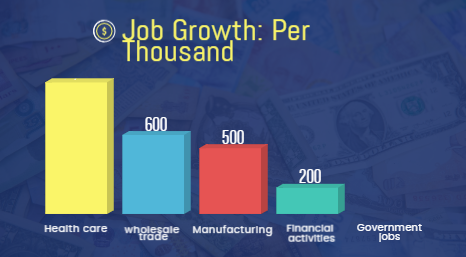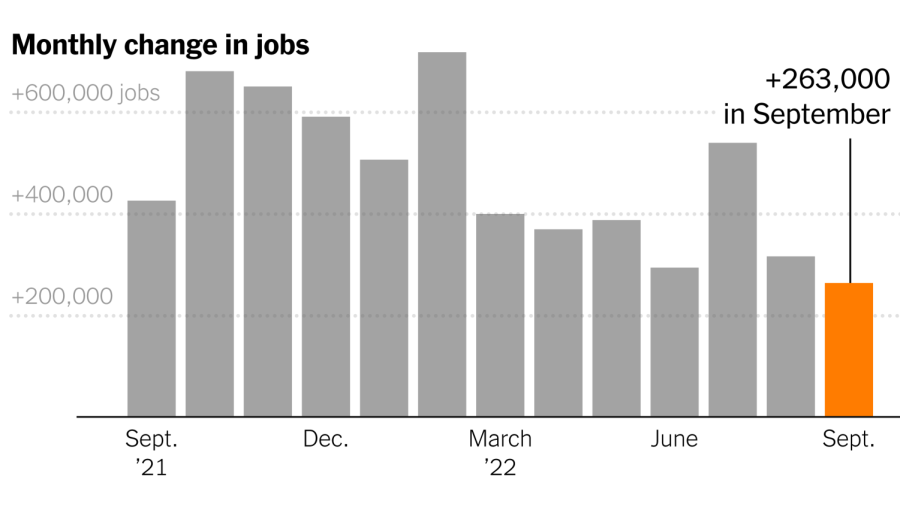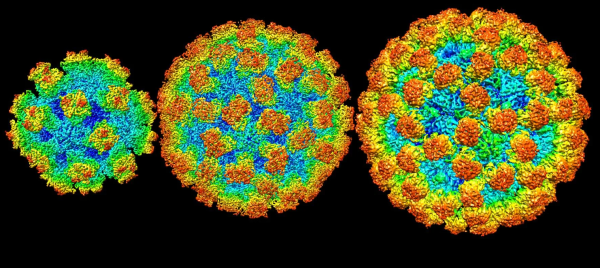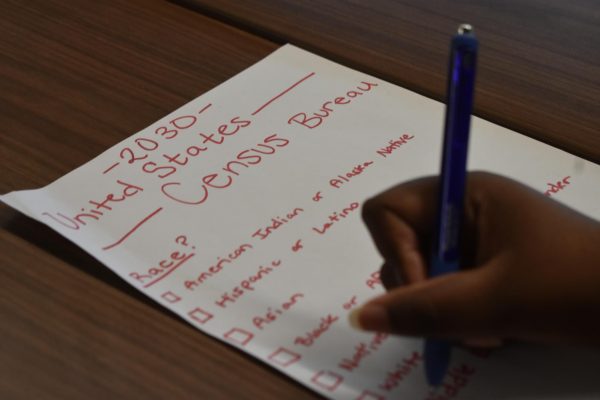Jobs skyrocket in September
courtesy of The New York Times
As of last month, employment grew by 263,000 and the inflation rate has decreased, currently standing at 8.3%. Wages grew by 0.3%, which helps fight inflation and help the economy stabilize. Numerous forms of job sectors hired a huge number of workers, especially healthcare and social assistance which consistently need workers.
October 21, 2022
US jobs slightly increased in September, with the unemployment rate decreasing from 3.6% in August to 3.5%, despite a great effort by the Federal Reserve to slow down the economy. Nonfarm payrolls increased to 263,000 jobs last month and down from 315,000 in August, exceeding market expectations of 250,000. The New York Federal Reserve President stated that the economy needs a slight increase in jobs to help bring down inflation.
Although inflation stays high, the increase in jobs helps to battle the inflation rate. Currently, Inflation stands at 8.3%, and hourly wages climbed by 0.3% this past month, from $30.76 to $32.36 this past year. Companies struggle in trying to match supply and demand, which led to 1.7 openings of jobs for any available worker. This increase helped drive up wages, even though hourly wages fell short of the inflation rate. Wage growth helps keep inflation from rising and cools the economy down. Employers continue to raise the prices to help match labor costs without losing profit, which drives up inflation. Thus far, the speed of the price increase stands as the fastest in four decades, and central bankers work to slow down inflation. The wages continue to rise and the Federal Reserve stays on course as employment grows across the economy.
“Yes, my wages have increased like twice this past year and I think the minimum wage should increase as the economy grows. It also depends on the circumstance and what they use their money for,” senior Brenna Gresham said.
People aging from 16-24 employed in July 2022 increased by 54.4% from the previous year, and the unemployment rate for youth went down by 8.5% in July 2022. Every summer, the youth labor force grows exceptionally between April and July as high schoolers and college students tend to look for jobs. This summer, the youth labor force grew by 2.6 million in April to 22.9 million in July.
“It depends on their circumstances, if they have a lot going on then they shouldn’t get a job, but if they desperately need the money then they should get a job. I got my job during the summer and if students have a hard time juggling both school and their job, they shouldn’t continue with their job but if they can then they can continue. As jobs increase, people can take advantage and look for a job or get a job,” Gresham said.
Since the pandemic, healthcare jobs increased by 60,000, wholesale trade rose by 11,300 and manufacturing rose by 22,000. Government jobs dropped by 25,000, the largest sector of all. According to US Chambers, transportation, health care and food sectors currently hold the highest number of job openings, although the food sectors struggle to retain workers and experience higher than average quit rates. Healthcare and social assistance industry returned to its pre-pandemic level; hospitals and ambulatory services each added 28,000 jobs this last September. The quitting rate of Americans decreased, contributing to the increase in jobs and job openings this year, making it easier for teens to apply for jobs now.




















